Jade Emperor Pagoda
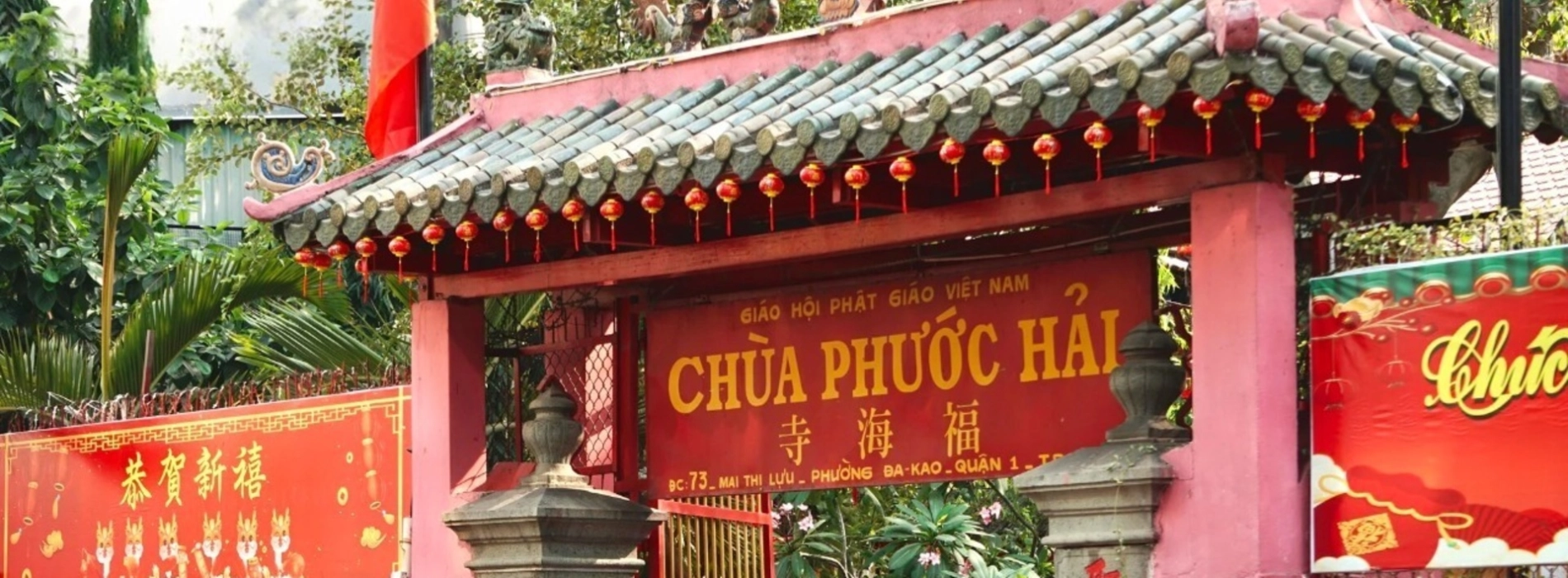
Although it was only built in the early 20th century, Jade Emperor Pagoda is considered a sacred place of worship by the people of Ho Chi Minh City. On full moon days or the beginning of the lunar month, locals come here to pray for peace, love, and fertility.
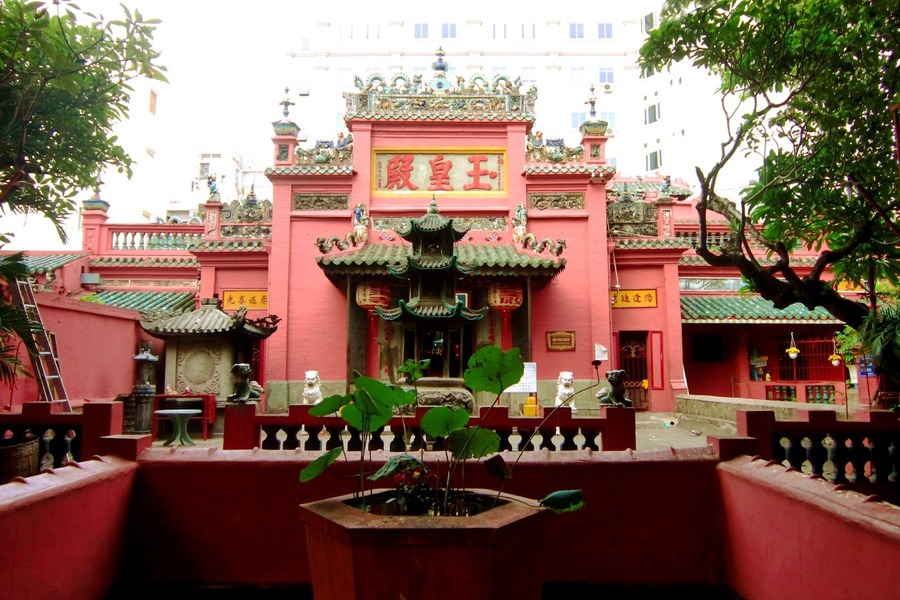
The courtyard in front of the main hall of Jade Emperor Pagoda
Besides its spiritual significance, the pagoda stands out with its distinctive Chinese architecture and vibrant red color, making it a must-visit attraction. Notably, it was visited by former U.S. President Barack Obama during his official trip to Vietnam in 2016. Since then, the pagoda has gained even more public attention, both among the general public and followers. Join Asia King Travel as we take you on a stroll around this remarkable temple in the article below.
Jade Emperor Pagoda is located at 73 Mai Thi Luu Street, Da Kao Ward, District 1, Ho Chi Minh City. The French once referred to it as Da Kao Pagoda. After a renovation in 1984, the temple was officially renamed Phuoc Hai Tu, but it is still commonly known as Jade Emperor Pagoda to this day.
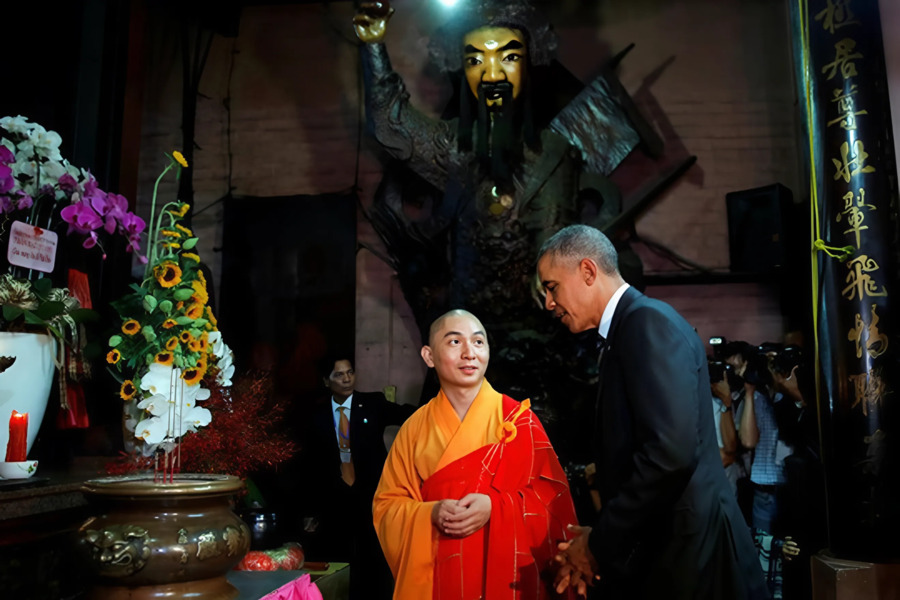
Former U.S. President Barack Obama visited the pagoda in 2016
The pagoda is located near the major road Dien Bien Phu, so it’s very easy to reach. You can take a taxi, a motorbike ride via an app, or simply drive yourself. Bus routes 18, 91, 93, and 150 also stop near the pagoda. If you’re staying nearby, why not take a walk and enjoy the streets along the way?
The quickest route from Tan Son Nhat Airport is to take Cach Mang Thang Tam Street, turn left onto Dien Bien Phu Street, then go straight until you reach the roundabout. Make a U-turn there and turn left onto Mai Thi Luu Street. The pagoda is right on the main road, so it’s easy to spot.
Suggested for you: Ho Chi Minh Mui Ne Da Lat Tour 4 Days: Southern Vietnam Explorer
In Vietnamese tradition, full moon days and the first days of the lunar month are times to worship ancestors and pray for peace and good fortune for oneself and loved ones. On these days, many people visit temples. Jade Emperor Pagoda, known for its spiritual power, attracts a large number of worshippers. During major holidays like Tet (Lunar New Year), it becomes even busier.
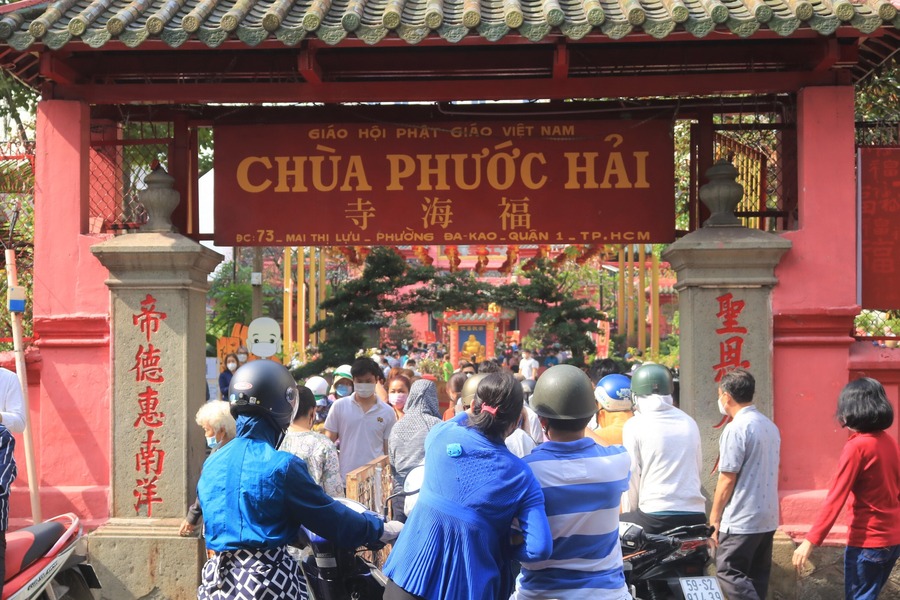
The pagoda is crowded with visitors on holidays
Be sure to check the lunar calendar and experience the Eastern spiritual atmosphere at the pagoda. If you're looking for a quieter visit to enjoy the peaceful surroundings, consider coming on other days. There will still be kind monks around who are happy to guide you through the temple.
Planned by a Chinese man named Liu Ming, the pagoda was designed in a distinct Chinese architectural style. It was built entirely from baked bricks, with colorful ceramic statues intricately inlaid along the walls and roof corners. The pagoda stands out with its bright red paint and numerous hanging lanterns.
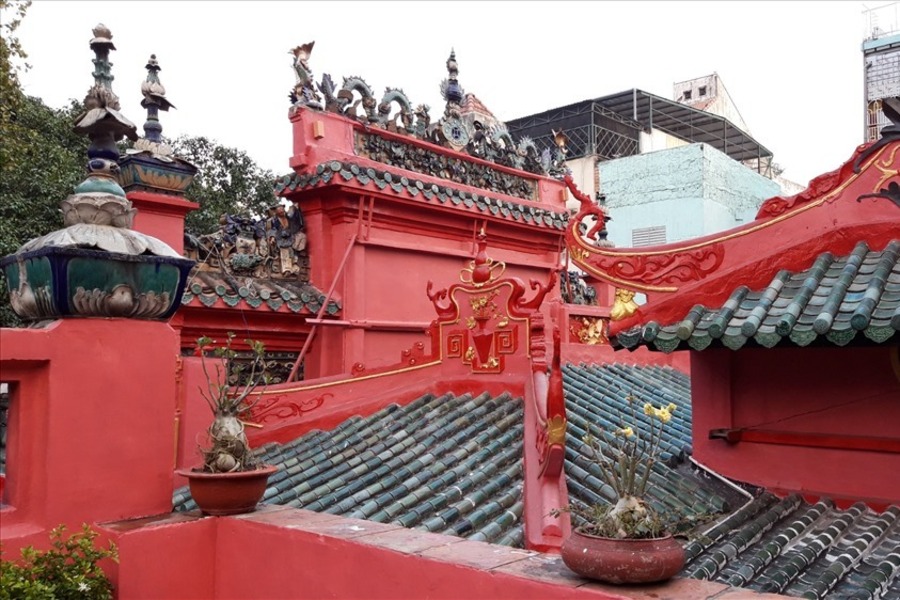
The walls and tiled roof of the pagoda
Jade Emperor Pagoda sits on a spacious compound of around 2,300 square meters. Yet, don’t worry about getting lost, there are directional signs throughout the temple to help visitors navigate easily.
As you step inside, you’ll be greeted by a large, refreshing courtyard filled with greenery. The peaceful atmosphere includes a small shrine dedicated to the Dharma Protector, along with a nearby fish pond and turtle pond.
As its name suggests, the pagoda is dedicated to the Jade Emperor - the ruler of Heaven in Sinosphere culture. At the heart of the temple lies the Main Hall, the most sacred area, reserved for worshiping the Jade Emperor himself.
This space is adorned with powerful symbols such as dragons and tigers, along with statues of two guardian deities. It is a place where every visitor pauses to light incense, pay their respects, and pray for the Jade Emperor’s blessings and protection.
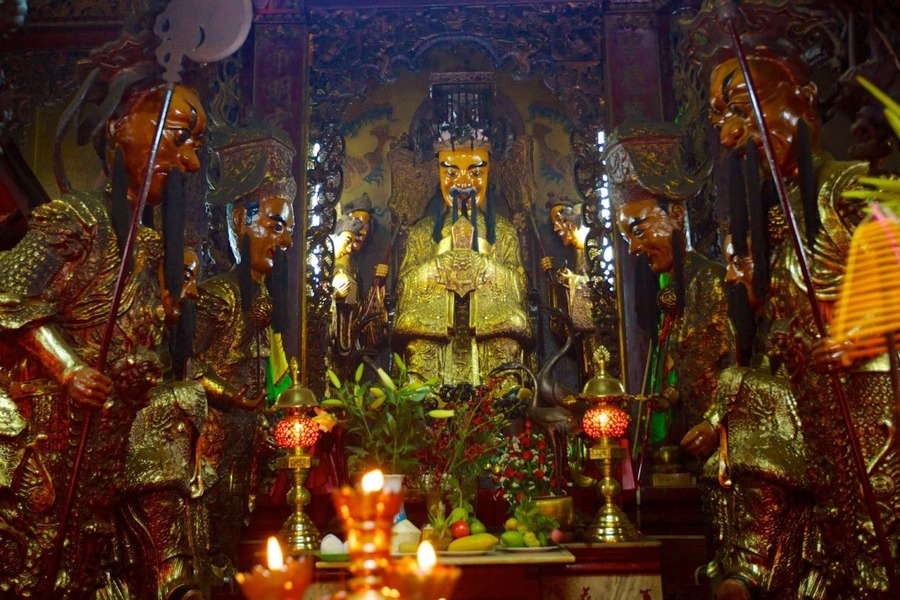
Jade Emperor altar hall
Before approaching the Jade Emperor, you’ll pass through a chamber dedicated to the Earth God and the Gatekeeper God, who are believed to protect the sacred grounds of the pagoda.
The altar of the God of Wealth is located on the left side of the pagoda. As the deity in charge of wealth and prosperity, his shrine is always filled with incense smoke and offerings from worshippers praying for success and good fortune in business and life.
Also located in the left wing of the pagoda is the shrine of the Ten Kings of Hell, the deities who oversee the underworld. Notably, this hall features ten wooden statues, each representing one of the ten trials that souls must endure in hell.
The solemn and dimly lit atmosphere of the shrine serves as a powerful reminder of the law of karma, encouraging people to do good deeds in life and avoid wrongdoing to escape punishment in the afterlife. Jade Emperor Pagoda is one of the rare temples that still preserves the tradition of worshiping the Ten Courts of Hell.
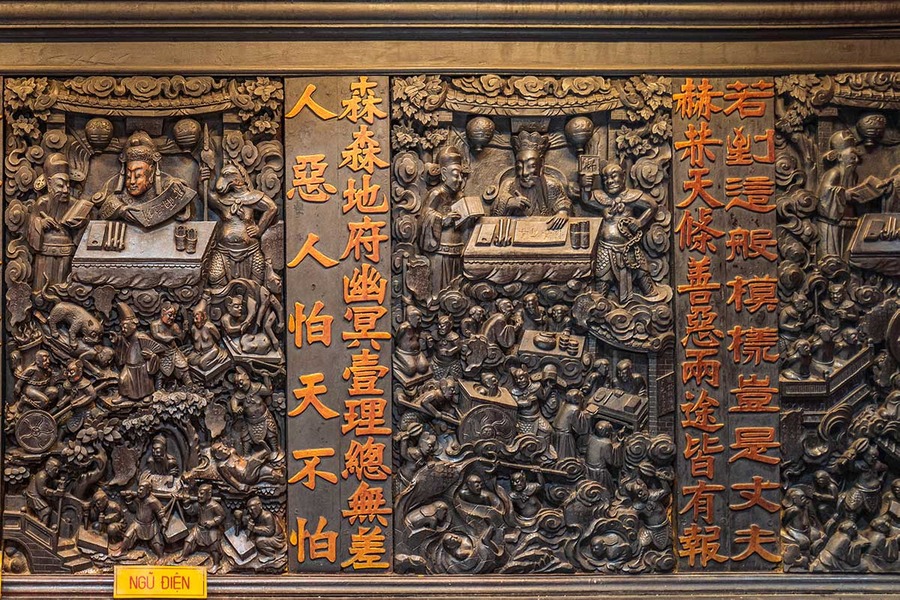
The relief depicting the underworld
Finally, at the far end of the left wing is the altar dedicated to Ong To - Ba Nguyet (the matchmaker gods), who bless couples with love and marriage. Inside, you'll also find statues of the Twelve Midwife Goddesses, each responsible for a different aspect of childbirth.
These deities govern fertility and protect both mother and child. That’s why many couples visit this shrine to pray for happiness, singles come to seek love, and married pairs hope for a healthy baby under the gods’ blessings.
The right wing of the pagoda is dedicated to Guan Yin, who represents compassion and is believed to hear the cries of all beings, offering help and guidance through suffering and hardship. This area also includes a separate space where visitors can sit and rest.
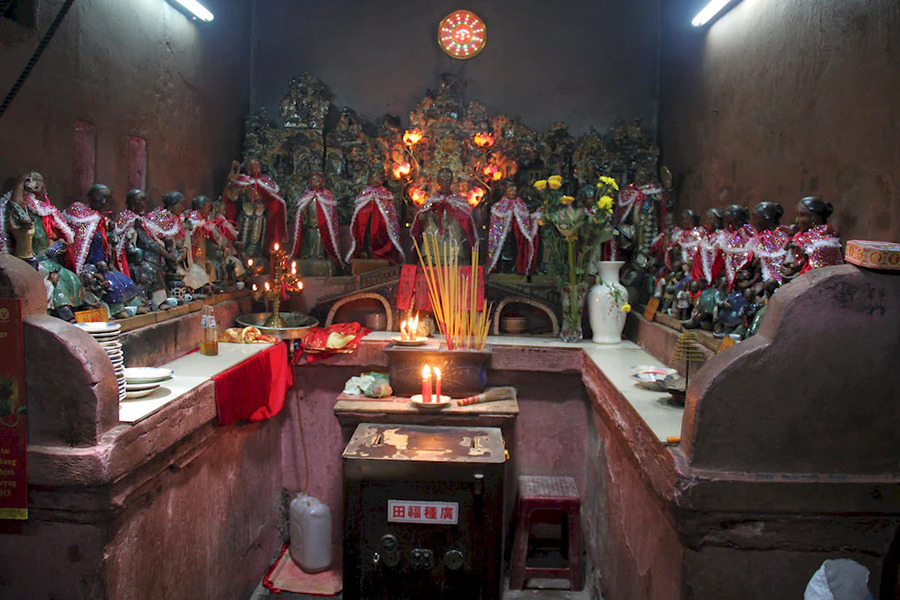
The statues of the Midwife Goddesses who protect childbirth
In addition, the pagoda houses many other deities from the Buddhist tradition. There are over 300 statues throughout the temple, all intricately and realistically carved with remarkable craftsmanship.
Jade Emperor Pagoda is a sacred and visually stunning destination nestled in the heart of modern Ho Chi Minh City. Amid the many well-known attractions in District 1, make sure to stop by this peaceful temple to find a moment of serenity and perhaps a little good luck. Contact Asia King Travel to plan an unforgettable trip to Vietnam just for you!
Suggested for you: Ho Chi Minh Tour 2 hours: Exploring Ho Chi Minh City on foot